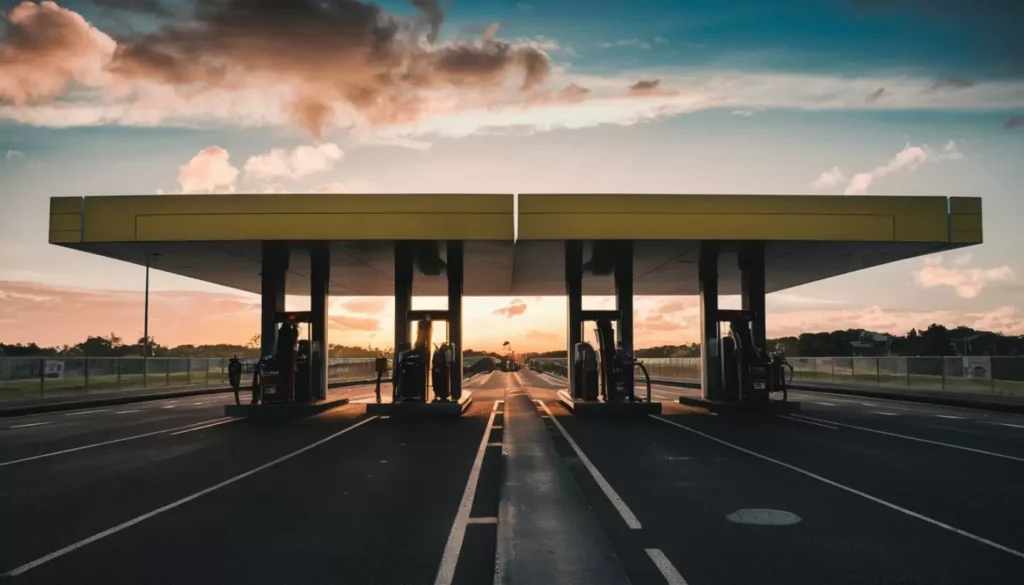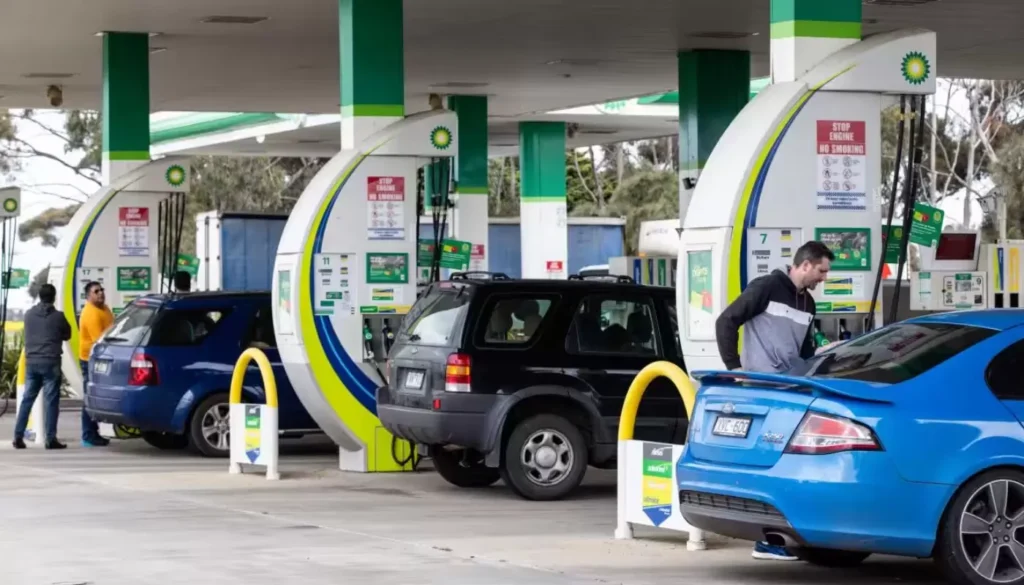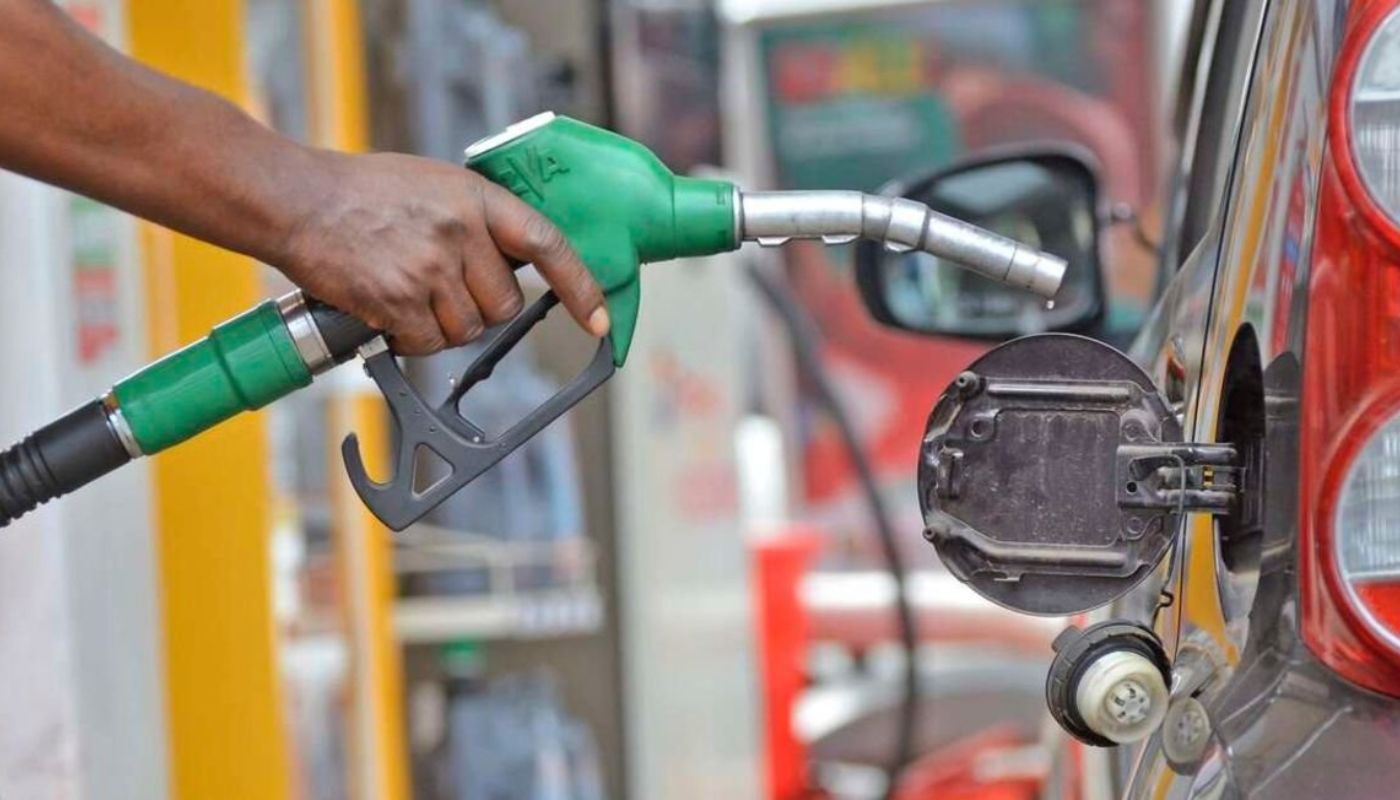I. Introduction
When it comes to fuel costs, Americans often focus on their local gas stations. But have you ever wondered how petrol prices in Australia stack up? Buckle up as we take a journey through the land down under’s fuel market in 2023. You might be surprised to learn that understanding Australian petrol prices isn’t just trivia – it’s a window into global energy trends that affect us all.
Australia, like the US, is a vast country with diverse regions and economies. But unlike the US, it’s an island continent with unique challenges in fuel distribution and pricing. In 2023, the average petrol price in Australia has been a hot topic, with fluctuations catching the attention of consumers and policymakers alike.
Why should Americans care about petrol prices halfway around the world? Well, in our interconnected global economy, fuel prices in one country can ripple across oceans, influencing international trade, travel costs, and even diplomatic relations. Plus, if you’re planning that dream Aussie vacation, knowing about fuel costs could save you a pretty penny – or should we say, a shiny Australian dollar?
II. Understanding Australian Petrol Terminology
Before we dive deeper, let’s get our lingo straight. Here’s a quick guide to Australian fuel talk:
- Petrol: This is what Aussies call gasoline. Don’t ask for gas at the pump, or you might get a confused look!
- Liters vs. Gallons: Australia uses the metric system. One gallon equals about 3.78 liters.
- Australian Dollar (AUD): The local currency. As of 2023, 1 AUD is roughly equivalent to 0.65 USD, but this can fluctuate.
Here’s a handy conversion table:
| US Term | Australian Term | Conversion |
| Gasoline | Petrol | Same thing |
| Gallon | Liter | 1 gallon = 3.78 liters |
| USD | AUD | 1 USD ≈ 1.54 AUD (2023 average) |
Understanding these terms is crucial when comparing fuel prices between the two countries. Now, let’s fuel up on some knowledge about what drives Australian petrol prices.
III. Key Factors Influencing Australian Petrol Prices in 2023
Australian petrol pricing is a complex dance of global and local factors. Let’s break down the main players:
- Global Oil Market Trends: Like everywhere else, Australian fuel prices are heavily influenced by international crude oil prices. In 2023, we’ve seen significant volatility in the global oil market due to geopolitical tensions, production decisions by major oil-producing countries, and the ongoing recovery from the COVID-19 pandemic.
- Exchange Rate Fluctuations: The value of the Australian dollar against the US dollar plays a crucial role. A weaker AUD means more expensive imports, including oil, which drives up petrol prices.
- Local Competition and Market Dynamics: Australia’s vast distances mean that transportation costs can significantly impact fuel prices, especially in remote areas. Additionally, the level of competition between fuel retailers in different regions can lead to price variations.
- Government Policies and Taxes: The Australian government’s fuel excise and other taxes make up a substantial portion of the retail petrol price. Changes in these policies can have immediate effects on prices at the pump.
“The petrol price cycle is the result of deliberate pricing policies of petrol retailers, and is not directly related to changes in wholesale costs.” – Australian Competition and Consumer Commission (ACCC)
This interplay of factors creates what’s known as the fuel price cycle, a phenomenon where petrol prices rise and fall in a predictable pattern over time.
IV. Regional Breakdown of Petrol Prices Across Australia

Australia’s vast landscape leads to significant variations in petrol prices across different regions. Let’s take a tour:
Major Cities
In 2023, major Australian cities have seen fluctuating petrol prices, generally following the national trend but with some local variations:
- Sydney: As Australia’s largest city, Sydney often sets the tone for national pricing trends. The average unleaded petrol price in Sydney has hovered around 1.80 AUD per liter (about 4.42 USD per gallon) in 2023.
- Melbourne: Usually slightly cheaper than Sydney, Melbourne’s prices have averaged around 1.75 AUD per liter (4.30 USD per gallon).
- Brisbane: Known for its pronounced price cycles, Brisbane has seen prices swing between 1.70 and 1.90 AUD per liter (4.18 to 4.67 USD per gallon).
Rural and Remote Areas
Fuel prices in rural and remote areas of Australia tend to be higher due to increased transportation costs and less competition. For example:
- Alice Springs: This central Australian town often sees prices 20-30 cents per liter higher than major cities.
- Broome: In Western Australia’s Kimberley region, prices can soar to over 2.00 AUD per liter (4.91 USD per gallon).
Price Disparities and Reasons
Several factors contribute to these regional price differences:
- Transportation costs
- Local competition levels
- Population density
- Tourism influence (especially in coastal areas)
The Australian Competition and Consumer Commission (ACCC) closely monitors these regional variations and publishes regular reports to promote transparency in fuel pricing.
V. Comparison with US Gas Prices
To put things in perspective, let’s compare Australian petrol prices with US gas prices:
| Country | Average Price (2023) | Unit |
| Australia | 1.80 AUD | Per liter |
| USA | 3.50 USD | Per gallon |
When we convert these to a common unit (USD per gallon):
- Australia: Approximately 4.42 USD per gallon
- USA: 3.50 USD per gallon
At first glance, it appears Australians are paying significantly more for fuel. However, we need to consider several factors:
- Cost of Living: Australia generally has a higher cost of living than the US, which affects all prices, including fuel.
- Taxation: Australian fuel prices include higher taxes, which fund various government programs and infrastructure.
- Currency Fluctuations: Exchange rates can significantly impact these comparisons.
The impact on consumer behavior is notable. Australians tend to be more sensitive to fuel price changes and are more likely to use public transportation or fuel-efficient vehicles.
VI. The Role of Fuel Excise in Australian Petrol Prices
One of the most significant factors in Australian petrol pricing is the fuel excise, a tax levied by the federal government on fuel products.
What is Fuel Excise?
Fuel excise is a fixed amount charged per liter of fuel. As of 2023, the excise rate for petrol and diesel is 46.0 cents per liter. This tax is included in the retail price you see at the pump.
Recent Changes and Effects
In 2022, the Australian government temporarily halved the fuel excise to provide cost-of-living relief during a period of high inflation. This reduction ended in September 2022, causing a noticeable spike in fuel prices across the country.
Comparison with US Fuel Taxes
While the US also taxes fuel, the structure is different:
- Australia: Fixed federal excise + 10% Goods and Services Tax (GST)
- USA: Federal tax + varying state taxes
On average, Australians pay more in fuel taxes than Americans, which contributes to the higher overall price.
VII. Consumer Strategies for Saving on Petrol in Australia

Australians have developed several strategies to cope with fluctuating petrol prices. Here are some tips that even visiting Americans can use:
- Understand the Fuel Price Cycle:
- Prices tend to be lowest on Sundays and Mondays
- They gradually rise through the week, peaking on Thursdays or Fridays
- Use Price Comparison Apps: Popular options include:
- FuelMap Australia
- MotorMouth
- PetrolSpy
- Fuel-Efficient Driving Techniques:
- Maintain steady speeds
- Avoid rapid acceleration and braking
- Keep tires properly inflated
“By timing their purchases with the bottom of the price cycle, motorists can save themselves a lot of money.” – ACCC spokesperson
These strategies can lead to significant savings over time, especially for frequent drivers or those on long road trips.
VIII. Environmental Considerations and Alternative Fuel Options
Australia, like many countries, is grappling with the environmental impact of fossil fuels. Here’s how it’s shaping the fuel landscape:
Shift Towards Cleaner Fuels
Australia has been gradually increasing its use of cleaner fuel options:
- E10 Fuel: A blend of 90% unleaded petrol and 10% ethanol, widely available and slightly cheaper than regular unleaded.
- Biodiesel: Made from vegetable oils or animal fats, it’s becoming more common, especially for heavy vehicles.
Electric Vehicle Adoption
While lagging behind some other developed countries, Australia’s electric vehicle (EV) market is growing:
- EV sales increased by 65% in 2022 compared to 2021
- The government has introduced incentives to encourage EV adoption
Comparison with US Environmental Policies
Both countries face challenges in transitioning to cleaner energy:
- Australia has been criticized for its slower adoption of stringent emissions standards
- The US has seen a push for EVs under recent administrations, but faces infrastructure challenges
IX. Future Projections for Australian Petrol Prices

Looking ahead, several factors could influence Australian petrol prices:
- Global Oil Market: Geopolitical events and production decisions by major oil-producing countries will continue to play a significant role.
- Renewable Energy Transition: As Australia invests more in renewable energy, this could gradually reduce dependence on fossil fuels and impact prices.
- Government Policies: Any changes to the fuel excise or introduction of new environmental regulations could affect pricing.
- Technology Advancements: Improvements in fuel efficiency and alternative fuel technologies could put downward pressure on petrol prices.
Expert predictions suggest that while short-term volatility is likely to continue, the long-term trend may see a gradual decline in petrol consumption as alternative technologies become more prevalent.
X. Conclusion
Understanding petrol prices around Australia offers more than just a glimpse into the country’s fuel market – it provides insights into global energy trends, environmental challenges, and economic interconnections.
For Americans, whether you’re planning a trip to Australia or simply interested in global energy markets, keeping an eye on Australian petrol prices can be enlightening. It highlights the similarities and differences in how our two countries approach fuel pricing, taxation, and environmental policies.
As we move towards a future of changing energy landscapes, the story of Australian petrol prices serves as a microcosm of the larger global shift in how we think about, price, and consume energy.
XI. Additional Resources
For those who want to dive deeper into Australian fuel prices, here are some valuable resources:
- Australian Institute of Petroleum: Offers weekly fuel price reports and industry insights.
- ACCC Fuel Price Reports: Regular updates on fuel price trends across Australia.
- FuelWatch: Western Australia’s fuel price monitoring service.
Remember, whether you’re filling up in Sydney or San Francisco, being an informed consumer is always the best way to navigate the complex world of fuel prices. Keep an eye on those price cycles, use comparison tools, and drive efficiently – your wallet (and the environment) will thank you!

Marathi author Anju Mary has made a mark in the literary world with her innovative storytelling and deep passion for reading. Her unique narrative style and creative approach offer readers a distinctive and enriching experience, solidifying her reputation as a prominent writer.











